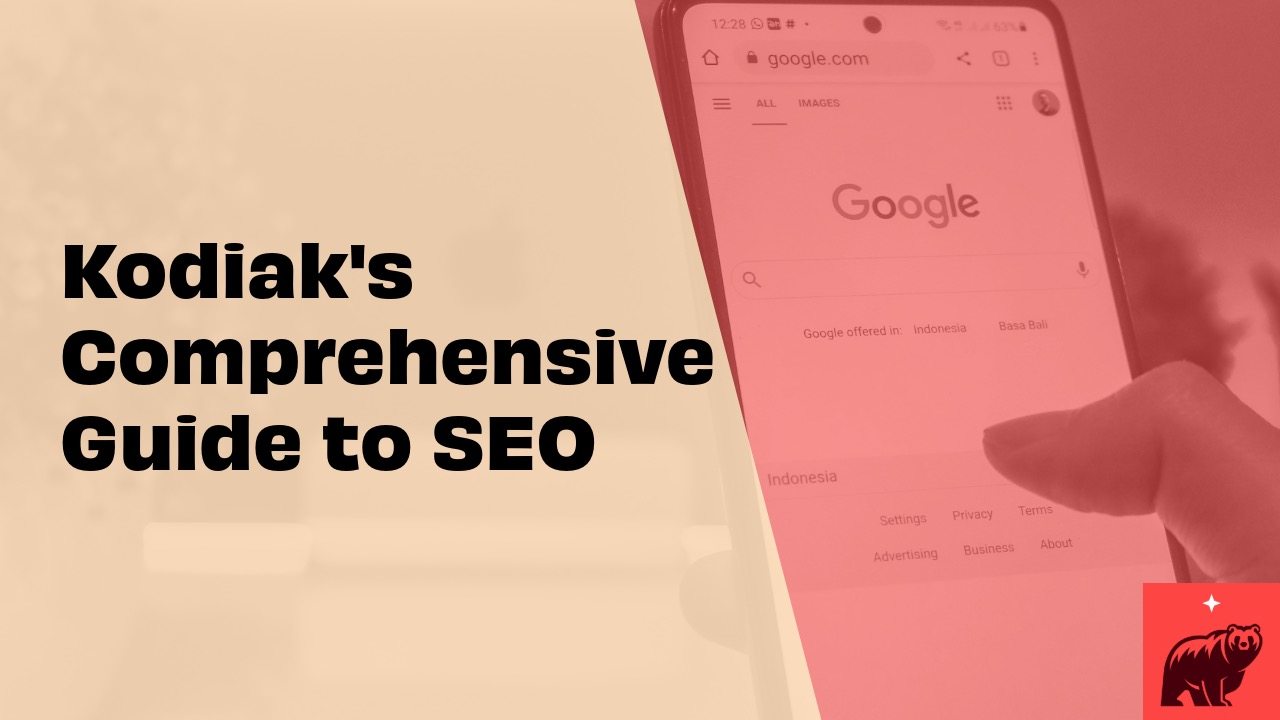In today’s digital landscape, a strong online presence is essential for businesses of all sizes. A recent study found that nearly 90% of consumers research products and services online before making a purchase. But how do you ensure your business stands out amidst the digital noise? The answer lies in Search Engine Optimization (SEO). This guide will help you understand SEO and its potential to elevate your business’s online visibility.
What is SEO?
SEO is the art and science of increasing your website’s visibility in search engine results pages (SERPs). When your site ranks higher, you attract more visitors genuinely interested in your offerings. It’s about connecting with your target audience precisely when they’re searching for solutions you provide.
How Search Engines Work
Search engines like Google, Bing, and Yahoo use complex algorithms to crawl websites, index their content, and rank them based on relevance and authority. These algorithms consider hundreds of factors, including keywords, content quality, site speed, mobile-friendliness, and backlink profile. Understanding these factors is key to optimizing your website for search engines.
Benefits of SEO
Investing in SEO can yield significant returns for your business:
- Increased Organic Traffic: Higher search rankings translate to more organic traffic. It’s like having a storefront on a busy street, attracting potential customers who are actively seeking products or services like yours.
- Enhanced Brand Awareness: Improved visibility builds brand recognition and trust. When your website consistently appears in search results, it reinforces your brand as a leader in your industry.
- Higher Quality Leads: People searching for specific terms related to your business are more likely to convert into customers. SEO helps you attract qualified leads who are genuinely interested in what you offer.
- Cost-Effective Marketing: Unlike paid advertising, which incurs ongoing costs, SEO is a long-term investment. Once your website achieves high rankings, it can continue to generate organic traffic for months or even years to come.
Core SEO Factors
SEO can be broken down into three core areas:
- On-page SEO: This involves optimizing the content and elements on your website, such as keywords, title tags, meta descriptions, headings, and images.
- Off-page SEO: This focuses on building your website’s authority and reputation through external factors like backlinks from other reputable websites, social media engagement, and online directory listings.
- Technical SEO: This ensures your website is easily accessible and understandable to search engines. It includes aspects like site speed, mobile-friendliness, site structure, and schema markup.
On-Page SEO
Off-page SEO encompasses all the activities you undertake outside of your website to bolster its authority and improve search ranking. Think of it as building a reputation for your business in the vast digital world. It’s about establishing trust and credibility in the eyes of search engines and users alike. A strong off-page SEO strategy can significantly amplify your website’s visibility and drive organic traffic.
Here are some key on-page factors to focus on:
- Keyword Research and Optimization: Identify relevant keywords that your target audience is using and strategically incorporate them into your website’s content, titles, and meta descriptions.
- Content Quality and Relevance: Create high-quality, informative, and engaging content that satisfies user intent and addresses their needs.
- Title Tags and Meta Descriptions: Craft compelling title tags and meta descriptions that accurately reflect the content of your pages and entice users to click.
- Header Tags: Use header tags (H1, H2, H3, etc.) to structure your content and make it easier for both users and search engines to understand.
- Image Optimization: Optimize your images with descriptive alt text and compress them to improve page load speed.
- Internal Linking: Use internal links to connect relevant pages within your website, improving user navigation and distributing link equity.
Off-Page SEO
Off-page SEO involves activities outside of your website that contribute to its overall authority and search ranking. Building a strong online reputation is crucial for off-page SEO success. Here are some key off-page strategies:
- Backlink Acquisition: Earn high-quality backlinks from reputable websites in your industry. Backlinks act as votes of confidence, signaling to search engines that your content is valuable and trustworthy.
- Social Media Engagement: Actively engage with your audience on social media platforms, sharing valuable content and building relationships. While social signals may not directly impact search ranking, they contribute to brand visibility and online reputation, which can indirectly influence SEO performance. For instance, a study found that brands with active social media presence see a 75% increase in website traffic compared to those with minimal social media activity.
- Google Business Profile: This is a free tool provided by Google that allows businesses to manage their online presence across Google Search and Maps. Ensure your profile is complete and accurate, with high-quality photos, a compelling business description, and up-to-date information. Encourage your customers to leave reviews, and actively respond to them, showcasing your engagement and commitment to customer satisfaction.
- Online Directory Listings: List your business in relevant online directories and ensure your NAP (Name, Address, Phone Number) information is consistent across all platforms.
Technical SEO
Technical SEO focuses on the technical aspects of your website that affect its crawlability and indexability by search engines. A well-optimized website from a technical standpoint ensures that search engines can easily find, understand, and rank your content. Here are some essential technical SEO considerations:
- Mobile-Friendliness: With the majority of internet traffic now coming from mobile devices, it’s crucial to have a responsive website that adapts seamlessly to different screen sizes.
- Site Speed: Page load speed is a critical ranking factor. Optimize your website’s code, images, and server configuration to ensure fast loading times.
- Site Structure: Organize your website’s content in a logical and hierarchical manner, making it easy for users and search engines to navigate.
- Schema Markup: Implement schema markup to provide search engines with additional context about your content, improving visibility and click-through rates.
Getting Started with SEO
Embarking on your SEO journey might seem daunting, but it doesn’t have to be. Here’s a step-by-step approach to get you started:
- Keyword Research: Identify relevant keywords that your target audience is using to search for products or services like yours. Utilize keyword research tools to discover high-volume, low-competition keywords.
- On-Page Optimization: Optimize your website’s content, title tags, meta descriptions, headings, and images with your target keywords. Ensure your content is informative, engaging, and satisfies user intent.
- Content Creation Strategy: Develop a content marketing plan that focuses on creating valuable and relevant content for your target audience. Utilize various content formats, such as blog posts, articles, videos, and infographics.
- Backlink Building: Reach out to other websites and blogs in your industry to acquire backlinks to your website. Focus on earning links from high-authority domains or reputable sources.
- Local SEO: If you have a physical business location, optimize your Google My Business profile and ensure your business information is consistent across all online directories.
Advanced SEO Techniques
As you gain more experience with SEO, you can explore more advanced techniques to further enhance your website’s visibility:
- E-commerce SEO: If you run an online store, optimize your product pages with detailed descriptions, high-quality images, and schema markup.
- Mobile SEO: Prioritize mobile page speed and user experience to cater to the growing number of mobile users.
- Voice Search Optimization: Optimize your content for natural language and conversational keywords to capture voice search traffic.
Kodiak’s Approach: Understanding Your Business & Goals
At Kodiak, we believe in a personalized approach to SEO. We take the time to understand your business objectives, target audience, and competitive landscape to develop a customized SEO strategy that aligns with your specific needs.
Conclusion
Effective SEO can significantly impact your online visibility, attract qualified leads, and drive business growth. By implementing the strategies outlined in this guide, you can improve your website’s search engine ranking and achieve your business goals.
Ready to unlock the power of SEO for your business? Contact Kodiak today for a free consultation and let’s work together to elevate your online presence and reach your full potential!







